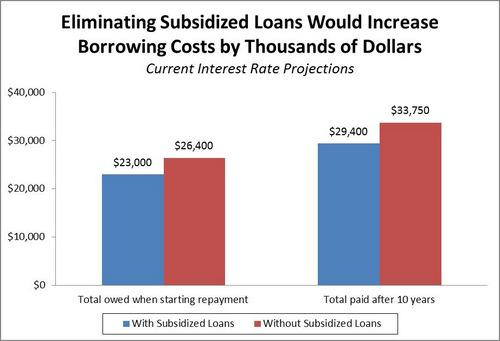Reforming the U.S. Department of Education: A New Era in Student Loan and Special Education Management
Overhauling Student Loan Administration: A Strategic Separation
Under the Trump administration, a transformative restructuring of the U.S. Department of Education has been implemented, distinctly separating the management of student loan programs from special education services. This reorganization is designed to create a more focused and efficient framework for handling federal education responsibilities. By establishing a dedicated office solely responsible for student loan oversight,the government aims to enhance accountability and streamline loan servicing processes,potentially benefiting over 40 million federal student loan borrowers nationwide.
Major components of this restructuring include:
- Formation of an autonomous Student Loan Oversight Office to centralize loan servicing and debt collection efforts.
- Creation of a separate division devoted exclusively to special education, emphasizing specialized support and regulatory compliance.
- Implementation of improved data-sharing systems between these new entities to bolster service quality and policy enforcement.
| Function Area | Before Restructuring | After Restructuring |
|---|---|---|
| Student Loan Management | Managed within general Education Department | Handled by dedicated Oversight Office |
| Special Education Services | Part of main Education Department | Operated by separate Specialized Division |
| Accountability and Oversight | Dispersed responsibilities | Centralized with clear mandates |
Concerns from Disability Advocates Over Special Education Division
The decision to relocate special education services outside the central Department of Education has sparked apprehension among disability rights advocates and educators. Many fear that this decentralization could fragment essential support systems for millions of students with disabilities, particularly in rural and underserved areas that depend heavily on federal oversight and funding. The potential for inconsistent service delivery and weakened enforcement of federal mandates has raised alarms within the community.
Primary issues highlighted by advocacy organizations include:
- Decreased accountability for schools and states managing special education programs.
- Possible delays in the development and implementation of Individualized Education Programs (IEPs).
- Challenges in ensuring compliance with the Individuals with Disabilities Education Act (IDEA).
| Area of Impact | Potential Effect | Advocacy Focus |
|---|---|---|
| Resource Distribution | Unequal allocation of funds | Clarity and fairness |
| Access to Services | Longer wait times for evaluations and support | Timely intervention |
| Regulatory Compliance | Reduced oversight effectiveness | Strict enforcement |
Evaluating the Policy Shift: Effects on Federal Education Funding and Administration
This administrative realignment represents a essential change in how federal education funds are distributed and managed. By isolating student loan programs and special education services into separate entities,the government seeks to improve operational efficiency and financial transparency.However, this division also raises concerns about maintaining cohesive support for vulnerable student groups who benefit from integrated service models.
Notable consequences of the restructuring include:
- Financial management improvements: Dedicated oversight may lead to more precise budget allocations and reduced administrative costs.
- Risks to special education cohesion: Fragmentation could disrupt the seamless delivery of individualized education plans and related services.
- Student loan servicing: While focused administration might enhance loan repayment processes,it may also create silos that hinder coordination with broader education policies.
| Aspect | Prior to Restructuring | Following Restructuring |
|---|---|---|
| Student Loan Oversight | Embedded within Education Department | Operates as an independent agency |
| Special Education Coordination | Centralized management | Decentralized structure |
| Funding Distribution | Unified budget | Segmented allocations |
As this policy evolves, educators, lawmakers, and advocacy groups emphasize the importance of balancing administrative efficiency with the need to maintain extensive educational support. The success of this restructuring will largely depend on effective collaboration between the newly formed offices and the broader educational infrastructure.
Strategies to Safeguard Support for At-Risk Student Groups
In response to the recent departmental changes, experts recommend implementing focused strategies to ensure that funding and program quality for students reliant on special education and federal loan assistance remain intact. Protecting federal budgets dedicated to these services is critical,especially for low-income families and students with disabilities. Strengthening partnerships between state education agencies and local organizations is also vital to bridge any service gaps resulting from the federal restructuring.
Recommended actions include:
- Establishing emergency grant programs for schools with high numbers of special needs students to prevent service disruptions.
- Creating clear oversight bodies to monitor the accessibility and fairness of student loan programs.
- Expanding community-based educational support networks to supplement federal and state services, particularly in economically disadvantaged areas.
| Initiative | Primary Beneficiaries | Anticipated Impact |
|---|---|---|
| Emergency Grant Funding | Students with Special Needs | Reduced interruptions in essential services |
| Oversight Committees | Federal Loan Borrowers | Greater transparency and fairness in loan management |
| Community Support Networks | Students in Low-Income Communities | Improved access to supplemental educational resources |
Final Thoughts: Navigating the Future of Federal Education Policy
The Trump administration’s decision to restructure the Department of Education by separating student loan oversight and special education services signifies a major shift in federal education governance. While proponents argue that this will lead to increased operational efficiency and sharper focus, critics caution that it may jeopardize critical support for vulnerable student populations.As these changes take effect, educators, policymakers, and families will be closely monitoring their impact on access to vital educational resources across the country.




